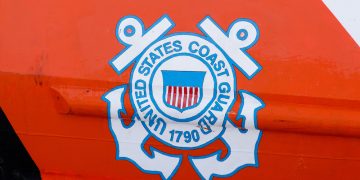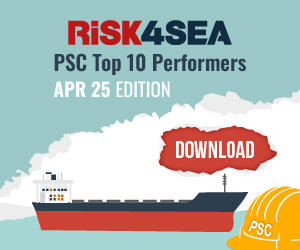During the 2019 SAFETY4SEA Athens Forum, Mr. Stavros Niotis, Principal Engineer OEP, ABS, discusses the STCW requirements of seafarers’ training, noting the three training types and the importance of seafarer competency and knowledge of people onboard the sea.
If we look in a different perspective, I would say that in order to have sustainable development of our industry and associated technology, we need to provide basic training to our seafarers and good requirements towards competency and knowledge of all people onboard the sea.
As far it concerns vessels using low flash point fuels, the training requirements for seafarers onboard those type of vessels, in other words the training for ships using the IGF code, were introduced through the amendments of STCW which came into force in January 2017.
The requirements describe special training requirements for seafarers working on “ships subject to the International Code of Safety for ships using gases or other low flashpoint fuels” (IGF Code) refer to competence, knowledge, understanding and proficiencies for basic and advanced training.
As such, the flag Administrations shall ensure that a Certificate of Proficiency is issued to seafarers, who are qualified in accordance with paragraphs 5 or 7 as appropriate, or that an existing Certificate of Competency or Certificate of Proficiency is duly endorsed.
The training is structured into Basic, Advanced and Ship specific familiarization training.
Basic training:
For seafarers with designated safety duties, that are associated with the care, use, or emergency response to the fuel.
Advanced training:
Mainly for Masters, Engineer Officers & Personnel with immediate responsibility for the care, use, or emergency response to the fuel.
It requires at least 1 month sea time onboard an LNG fuel vessel and 3 bunkering operations. Two of these bunkering operations can be done through simulations.
Ship specific familiarization:
All seafarers on gas fueled ships should have familiarization with the vessel, similar to the standard process that is followed according to the SOLAS requirements.
The basic training for designated safety duties must include firefighting and Emergency Response. In particular, as it is specifically required in the STCW Practical exercises and instruction conducted under approved and truly realistic training conditions, and, whenever possible and practicable, in darkness.
The scope is that seafarers need to be competent in order to carry out fire fighting operations onboard a ship that uses these low flash point fuels, and for that reason the seafarers need to have sufficient knowledge and proficiency for items like:
- Fire organization and actions to be taken on LNG fueled vessels
- Special hazards associated with LNG fuel systems and handling
- Firefighting agents and method to detect, control and extinguish fires involving low flash point fuels
- Firefighting system operations
STCW equivalency provision
There is a provision of equivalency, especially for those who have been onboard of LNG or gas carriers.
The seafarers that have been certified and hold a valid endorsement for service on liquefied gas carriers are not required to have this training. Yet, this valid endorsement means that you have a certain minimum seagoing service and cargo transfer participation requirements must be met, 3 months / 3 transfers within the last 5 years for Advanced training equivalence.
This means that basically there is no equivalency to attending the liquefied gas carriers course alone.
Classroom size and course time
The actual classroom training time depends on the course but indicatively it can be 16 hours for the basic training, 8 hours for firefighting, 16 hours for advanced training where you need to include also the bunkering operation, which can be two bunkering simulations and one onboard.
The size is typically limited to 20 – 24 participants in accordance with STCW and flag state guidelines for marine training.
Competence for the classroom portion is assessed by a written exam at the end of the Basic and Advanced sessions
Also, the firefighting competence is addressed by the fire training facility instructors.
The attendance
The emphasis of the STCW learning objectives is somewhat focused on technical and engineering topics, meaning the officers who are mainly going to use on everyday operation the low flash point fuel systems.
In general, there is limited value in providing Advanced training to deck officers and ratings, other than Masters, as specifically noted in the STCW amended regulations.
According to our knowledge, there aren’t any approved courses or any flag state that is currently issuing endorsement with these regulations. In addition to that, there is no IMO model course for the use of the administration or a maritime training providers to develop standardized compliant training.
Therefore, our guidelines for this kind of training is that:
- Owners should engage with their Administration to determine whether the training described above would be acceptable and / or approved.
- Once an acceptable course is defined, owners should determine what specific training they want to provide for which crew members.
- Once these have been established, ship specific course development using owner and vendor provided information and technical specifications can be completed.
- Following that, arrangement of a training venue and schedule for the selected crew members can be arranged.
- Facilitator should have capability to develop customized training that meets STCW minimums and any additional requirements by the Administration, or to advise and assist clients to develop their own training program
- This may include development of simulator training if desired or required, locating suitable LNG capable fire training facilities and developing a compliant firefighting training program.
- LNG experienced and suitably qualified instructors should be utilized, of course.
Above text is an edited version of Mr Stavros Niotis’ presentation during the 2019 SAFETY4SEA Athens Forum.
You may view his presentation herebelow:
The views presented hereabove are only those of the author and not necessarily those of SAFETY4SEA and are for information sharing and discussion purposes only.
About Stavros Niotis, Principal Engineer, ABS
 Stavros Niotis joined ABS in November 2013 as Engineer, Gas Center in Greece. His role focuses on all projects related to Gas Carriers and Gas fueled ships. He is involved on Rule development, innovative designs review and on providing technical advice to ABS engineering and clients for various gas technology aspects.
Stavros Niotis joined ABS in November 2013 as Engineer, Gas Center in Greece. His role focuses on all projects related to Gas Carriers and Gas fueled ships. He is involved on Rule development, innovative designs review and on providing technical advice to ABS engineering and clients for various gas technology aspects.
Niotis has worked as a Naval Architect and Marine Engineer for more than ten years, including work as a Plan Approval Surveyor for Lloyd’s Register in London, where he specialized in LNG membrane tanks.. Prior to this he worked for Ceres LNG services where he was involved in New Buildings plan approval, Dry Dock repairs and other technical and operational projects.
He has also worked as Junior Researcher in coordination with the School of Naval Architects and Marine Engineers (NTUA) on European Research Projects for Dynamic Ship stability (SAFEDOR) and for Ship Designs based on Risk Analysis for Fire spreading and Ship evacuation (FIREPROOF).
Niotis graduated from the School of Naval Architects and Marine Engineers at the National Technical University of Athens (NTUA), and holds a Masters of Engineering (MEng.)

































































